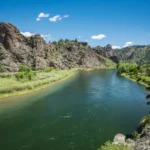
Trees are the longest living organisms on the planet and one of the earth’s greatest natural resources. They keep our air supply clean, reduce noise pollution, improve water quality, help prevent erosion, provide food and building materials, create shade, and help make our landscapes look beautiful. Here are some more thought-provoking facts and figures about our oldest citizens and living treasures…trees!
Trees help our soil remain healthy by reducing soil erosion and by creating a soil climate suitable for microorganism to grow.
There are over 23,000 different kinds of trees in the world.
A healthy tree can increase your property value by as much as 27 percent while trees with dead branches, hollow cavities and other problems can decrease your property value.
Evergreen trees are green year round because they do not lose all of their leaves in one season. Most will however lose some of their oldest leaves just before they produce new leaves in the spring. Some will lose part of their leaves in the fall.
A tree can absorb as much as 48 pounds of carbon dioxide per year and can sequester 1 ton of carbon dioxide by the time it reaches 40 years old.
Tree leaves are composed of many colored pigments — green chlorophyll hides them during the spring and summer growing seasons. Shorter days and cool temperatures in the fall cause the chlorophyll to break down and the other pigments to be see.
Every state has an official State Tree. We do not have a national tree, however, there is a campaign to have the oak adopted as our National Tree.
Arbor Day, a day site aside to plant and recognize the importance of trees, is not a national holiday. If fact the day observed varies from state to state.
Tree wood is a highly organized arrangement of living, dying, and dead cells.
The beginning and growth of tall woody trees in forests may have played a key role in the extinction of the dinosaurs.
Hundreds of food products (fruit, coffee, nuts, etc.) and food additives (for ice cream, chewing gum, etc.) come from trees.
One large tree can lift up to 100 gallons of water out of the ground and discharge it into the air in a day.
One large tree can provide a day’s supply of oxygen for up to four people.
Each year, one person uses wood and paper products equivalent to a 100 foot tree 18 inches in diameter.
Over 5,000 products are made from trees.
Trees are included in most religions. Some hold certain trees sacred; other use trees to help teach beliefs. The story goes that Buddha received his enlightenment under the wisdom tree.
Each year over 600,000 people travel to Macon, Georgia to see 240,000 cherry trees in bloom. The estimated revenue is over $6.5 million dollars per year.
Well-maintained trees and shrubs can increase property value by up to 14%.
Trees properly placed around buildings can reduce air conditioning needs by 30%
A mature tree removes almost 70 times more pollution than a newly planted tree.
A healthy tree can have a value of up to $10,000.
The shade and wind buffering provided by trees reduces annual heating and cooling costs by 2.1 billion dollars.
Each average-sized tree provides an estimated $7 savings in annual environmental benefits, including energy conservation and reduced pollution.
A single tree produces approximately 260 pounds of oxygen per year. That means two mature trees can supply enough oxygen annually to support a family of four!
Water originating in our national forests provide drinking water for over 3400 communities, and approximately 60 million individuals.
One tree can absorb as much carbon in a year as a car produces while driving 26,000 miles.
Over the course its life, a single tree can absorb one ton of carbon dioxide.
An average American uses about 750 pounds of paper every year, and 95% of homes are built using wood. That means each person uses the equivalent of one 100 foot tall, 16 inch diameter, tree every year for their paper and wood product needs.
About one third of the United States of America is covered by forests.
According to the last forest inventory, there are almost 247 billion trees over 1 inch in diameter in the U.S.
The average tree in an urban/city area has a life expectancy of only 8 years.
The tallest tree in the country is a Coast Redwood growing in northern California’s Redwood National Park. It is 369 feet tall and over 2000 years old!









